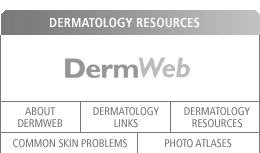|
|
 |
 |
 |
Sun Damage
Sun exposure will damage your skin in varying degrees depending on how long you are out in the sun, if your sun protection is adequate and appropriate and how your skin responds to sun.
If your exposure is moderate, your skin may adapt immediately by thickening and forming melanin, and over time repairing itself and return to normal. Too much sun can lead to sunburn. The redness, pain and swelling, which result from a sunburn, are comparable to any other type of burn. In most cases, your discomfort or pain will be temporary. However, if you have any long-term sun exposure, your skin may become permanently thickened and darker. These skin changes can cause:
- premature wrinkling
- skin lesions
- brown-coloured sunspots
- uneven colour
- visible blood vessels
The long-term effects of multiple sunburns are cumulative. For example, if you have six or more sunburns in your lifetime, your risk of developing some skin cancers is 2.4 times more than someone who never had a sunburn.
The best defense against Sun Damage is prevention: protect yourself from the sun. This involves the following:
- Using a high SPF (30+) sunscreen with the Canadian Dermatology Association logo when going out into the sun, and applying it properly. Make sure to apply lotion 15 minutes before sun exposure, and re-apply as necessary (usually every 2 hours).
- Keeping out of the sun during the hottest times of the day – 11 am to 3 pm. The sun is hottest during this time and the ultraviolet rays are the strongest. If you limit your exposure, you will reduce the sun’s impact dramatically.
- Use protection such as large hats, UV protecting garments, and UV-coated sunglasses. If you currently have Sun Damage, The Skin Care Centre offers several dermatologic procedures including Laser Therapy, Botox Therapy, and Skin Fillers that can improve the appearance of sun damaged skin.
« Back to Common Skin Disorders
modified 011808 |
|
 |
|

